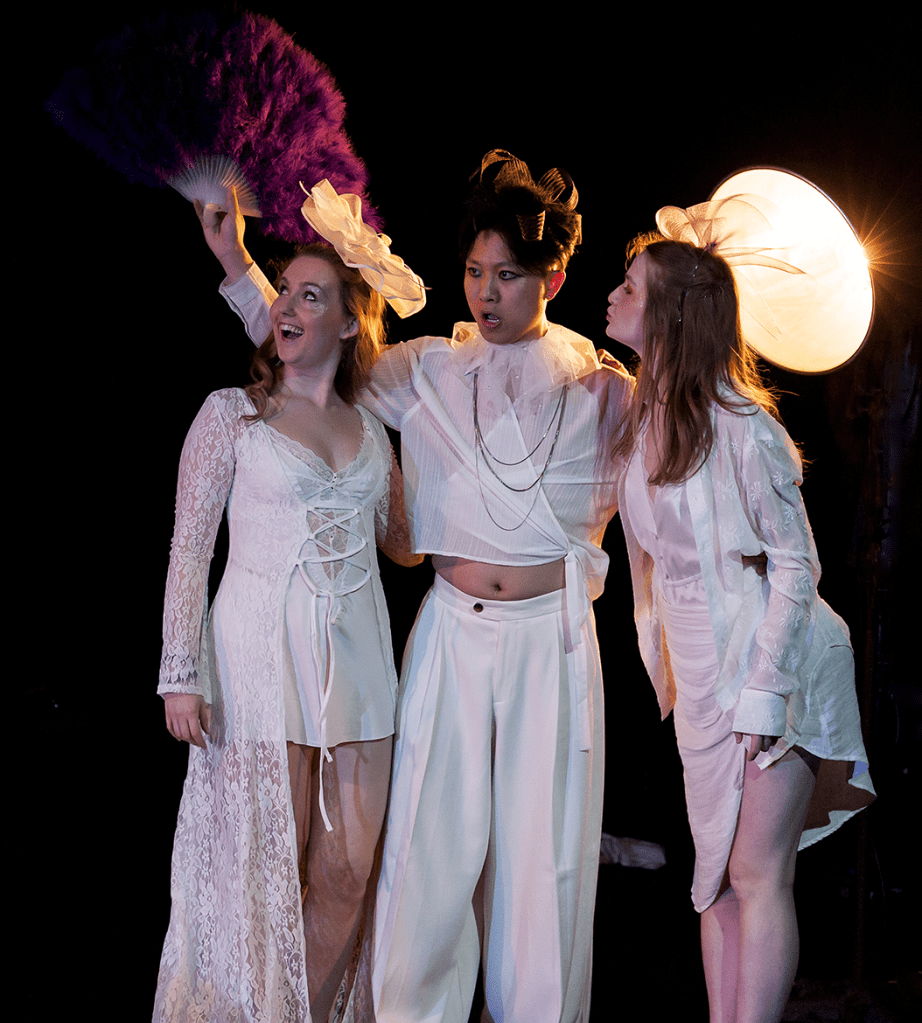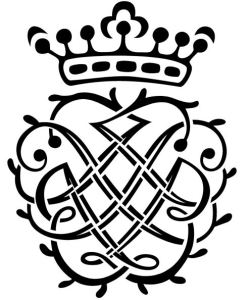Purcell, The Fairy Queen
HGO, HGOAntiqua Orchestra, Seb Gillot, Eloise Lally
Jacksons Lane Arts Centre, Highgate, 27 April 2024

Purcell’s ‘semi-opera’ is a complicated piece to perform and/or stage. Originally composed for a version of Shakespeare’s MIdsummer’s Nights Dream it includes incidental instrumental pieces (First and Second Music as the audience gathered, Act Tunes between acts, short symphonies at the start of each act and various dances) together with five staged masques at the end of each act. The whole thing lasts about 5 hours. I watched the bemused audience at Glyndebourne in 2009 as they sat through around 45 minutes of spoken text before the first masque. The music and text of the masques only bear a metaphorical relationship to the Shakespear tale. This impressive production by HGO (formally known as Hampstead Garden Opera) added an additional layer of interpretation by setting the whole thing as “a variety of incarnations by a magical tale-spinner, a photographer studying love through her camera lens”. They promised to take us “through the gamut of human emotions … as we are taken into the photographer’s dream space where anything is possible. In a brief spoken introduction, we were told that “mischiefs are at play”. Indeed they were.
There are nearly 60 musical items in Purcell’s music, and tracing a route through them is not easy. Elements of the original scenarios of Purcell’s masques were there, but it took quite a bit of mental gymnastics to recognise them amongst the imaginative and inventive interpretations by director Eloise Lally. The photographer (based on the surrealist photographer and model, Lee Miller), played by actor Hannah Jessop, arranged the ensemble cast of 14 singers into a range of tableaux. Every singer had solo spots, but they were also onstage for the entire time, dancing, posing, changing costumes and, to varying degrees, camping it up for all they were worth. It says something for the present-day training of opera singers (most, I think, were still students) that they were able to cope with such a range of skills so expertly. I might be wrong, but I didn’t get the impression that any of the singers saw themselves as specialising in early opera singing, the range of vocal styles suggested most were more used to a much later repertoire.

As part of the preparation for the show, they had all had training sessions with Emma Kirkby, an HGO trustee, but reducing vibrato was pretty clearly beyond her remit. However, I am sure that she helped them to deliver the text clearly, expressing vocally and physically the underlying mood of each song.
It was different for the 13-strong orchestra, directed from the harpsichord by Seb Gillot. They showed a real understanding of the techniques appropriate to Purcell’s music, and performed on copies of period instruments – to the confusion of the people sitting behind me who struggled to work out what the theorbo and baroque trumpets were (“I don’t think they are trombones”!). Particular mention must go to the continuo group of Jacob Garside, bass violin, Jonathan Bouht, theorbo and Catriona McDermid, bassoon. Katie Lodge also impressed on her baroque trumpet. One particularly effective moment came in If Love’s a Sweet Passion with Katie Lewis taking the stage to mirror Betty Makharinsky with her plaintive oboe (pictured below).

The amount of rehearsal time this production must have taken, and the ability of the ensemble cast to memorise the music and the complex movements are impressive, combining to produce an impressively professional final result. I don’t think I was the only one to assume that the singing of YMCA and a conga were the (rather daft) conclusion of the show. The subsequent sequence of music and singing did rather drag.
The full flip-page programme should be accessible here. It is worth reading the explanatory essays that explore the background to Purcell’s music, although it was not easy to follow them on a mobile phone during the performance itself. The performers list below is copied from that programme, with a selection of the roles that each singer took on.

ISSY BRIDGEMAN Juno
EMILY BROWN GIBSON First Fairy
DAISY LIVESEY Second Fairy, Night
BETTY MAKAHARINSKY ‘If Love’s a Sweet Passion’; ‘The Plaint’
ELSPETH PIGGOTT ‘Come, Let Us Leave The town’; ‘Ye Gentle Spirits
AMY KEARSLEY Hark, How All Things in One Sound’
RICHARD DECKER ‘One Charming Night’; Secrecy
GARRETH ROMAIN Mopsa
BRENNAN ALLEYNE ‘When A Cruel Long Winter’
GUY BEYNON Autumn; ‘Yes Daphne’
JACK HARBERD ‘Come All Ye Songsters’
JAMES HOLT The Drunken Poet
CHRIS MURPHY ‘Come, Let Us Leave The Town’
ALLYN WU Hymen
HANNAH JESSOP The Photographer (silent acting role)
MUSIC DIRECTOR Seb Gillot
DIRECTOR Eloise Lally
SET AND COSTUME DESIGNER Elin Steele
HGOANTIQUA ORCHESTRA
Violins – Maxim Del Mar / Sophie Simpson
Viola – Hannah Gardiner
Bass Violin – Jacob Garside
Theorbo/Guitar – Jonatan Bougt
Recorders/Oboes – Joel Raymond / Katie Lewis
Bassoon – Catriona McDermid
Trumpets – Katie Lodge / Sam Lewis / Tom Harrison
Timpani/Percussion – Fabian Edwards
Production photos by Laurent Compagnon
